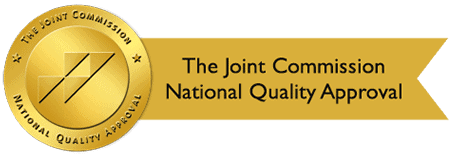It is easy to get misinformed on social media due to easy access and engagement experienced across the various platforms. Information is shared by family, friends, and even colleagues at work, making it appear trustworthy easily. Many people depend on social media as their sole source of information, making them vulnerable to misinformation and disinformation. Much more damage is witnessed when mainstream platforms for news outlets publish articles based on the popularity gotten on social media, further widening false information coverage.
Dangers Associated with Misinformation About Drugs
- Increased abuse of both natural and synthetic drugs
- The amplified distortion that leads to stigmatization of substances as well as users
- Amplified distortion affecting the war on drugs
- Stigma
Users interested in changing their paths and leading a drug-free life should consider trying the various treatment programs available. Design for Change Recovery is a rehab center located in Lancaster, California. The facility has comprehensive addiction recovery programs that a reforming user can select from. By utilizing various options, we have dedicated ourselves to helping both addicts, and their families effectively transition from addiction and start living a healthy and happy life.
Drug and Substance Abuse Intervention Programs
Watching a loved member of your family sink into the abyss of drug abuse puts a strain on the entire family. Depending on the extent of addiction, there may be a build-up of collateral damage, which prompts some of the family members’ intervention. Intervention, however, is not something that we do daily; hence the mastery of this intervention may not be accurately productive. The magnitude of effectiveness required in intervention calls for an external force.
Following the increased drug addiction cases catalyzed by misinformation spread through social media, we have opened doors at our drug rehabilitation center in Lancaster, California. We have opened the doors to our facility to every member of the society affected directly and indirectly by the effects of drug abuse. We have willingly taken up the challenge of educating family members about the process of intervention. We do this because experience has taught us that sometimes, intervention is the only way an addiction sufferer will ever see the inside of addiction rehab.
The Invention Process
The invention process involves confronting people suffering from addiction about their addiction and informing them of the adverse effects it is bringing to concerned family members. At our facilities, we recommend two options that aid in the intervention process.
- The first option is where we offer instructions to family members. The instructions are aimed at organizing and running a successful drug or alcohol intervention.
- We take the lead in conducting the intervention process. We consider this option when following consultations among the concerned family members, and we don’t find a member who feels comfortable taking the lead.
A successful process can only be achieved if conducted with great love, care, and compassion.
The Drug Addiction Treatment Process
After a successful intervention, the addict undergoes a treatment process. When an addict is admitted into rehab, they are enrolled in the process that we have developed to use for recovery. The process is as follows:
Intake Interview
The first step in this process is undertaking an intake interview. During this interview, the administrator assigned to you gathers information about you and the circumstances surrounding your addiction issues. The information collected forms the basis on which a customized treatment plan is created.
Drug and Alcohol Detox
After months or years of drug or alcohol abuse, any attempt to stop will result in the body’s resistance. This is referred to as withdrawal. Withdrawal symptoms exhibit themselves in breathing difficulties, convulsions, increased blood pressure and heart rate, hallucinations, muscle cramps, among others.
The detoxing process follows a three-step pattern which entails
- Evaluation
- Stabilization
- Preparation for entry
Stabilization involves helping the suffering addict overcome their withdrawal symptoms before focusing on therapy. The step is hard as some symptoms pose serious consequences. For patients who are faced with these adverse consequences, we have detox programs that are medically assisted for a safe and comfortable transition.
The most effective stabilization process has to be as natural as possible, but we may utilize medical intervention due to safety.
Inpatient Addiction Rehab Treatment Program
After successfully detoxing, the client is now equipped with enough strength and mental capacity to undergo therapy. Clients with significant addiction issues are advised to commit to inpatient treatment. The client resides in the treatment facility as part of treatment until meaningful recovery is established. The process usually takes an estimated duration of between one to three months.
The client participates in treatment at several levels with maximum time dedicate towards individual counseling. The aim is to unravel the root causes of their addiction. The second is resolution. It enables evasion of relapse. It involves creating good coping and life skills that aid in the navigation of temptations and personal triggers.
When not in individual therapy sessions, they engage in work in groups. The aim is to provide support and encouragement from others going through the same. In these group therapies, they get a chance to develop and build relationships that could become important to support resources in the future.
There is also downtime when clients can relax and interact with their fellow personally. They are entitled to entertainment and exercise to explore the facility’s amenities and participate in group activities.
Additional treatment programs
In addition to the three main addiction recovery steps, we also offer additional programs. These include:
Holistic Therapy
We have come up with holistic addiction treatment programs such as art therapy, Tai Chi, Yoga, routine exercise, proper nutrition, massage therapy, meditation, counseling, and acupuncture for the best treatment options.
Treatment using the holistic approach works differently for each individual. Once you learn which approach works best for you, you can carry it in after treatment to maintain a healthy living.
Outpatient Drug Rehab Program
We have the intensive outpatient treatment and general outpatient services for clients who are not comfortable residing at our facilities.
Under this program, the client must report to our Lancaster, California center to undertake their scheduled therapy sessions. We work in collaboration with the client and, based on their circumstances, determine the best outpatient program to adhere to. The options available are:
- Partial Hospitalization or PHP
It is the most restrictive. A client reports for mandatory treatment at least five times a week for approximately eight hours each day. They are involved in both individual and group therapy sessions.
- Intensive Outpatient or IOP
The client reports for treatment at least three times a week for approximately four to six hours each day. They are almost entirely involved in individual therapy.
- General Outpatient or OP
The client reports for treatment once or twice a week for no more than two hours of therapy. This option is a maintenance option for clients who have completed a higher level.
Family Therapy Program
In case of collateral damage, where family members are wrapped up in their loved one’s addiction, we recommend a family therapy program. This program allows for family support groups to aid in achieving sobriety.
Aftercare Treatment Program
After successful completion of a rehab program, clients return to their homes. Those who are insecure about their recovery can seek aftercare options. The options include a 12-step rehab program information, outpatient therapy, and referral to sober living homes.
If you are ready to fight your addiction, we at Destiny for Change are always prepared to fight with you. We encourage you to contact us as early as you can for more information about our facility and services.


